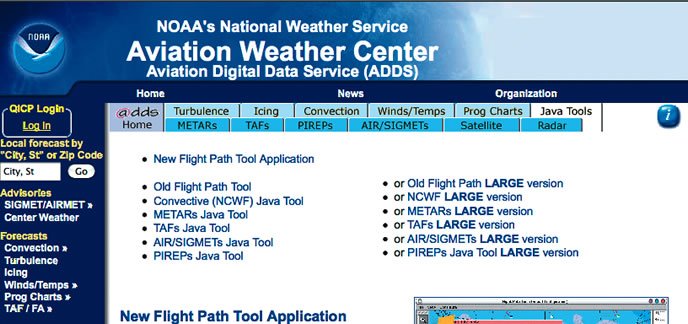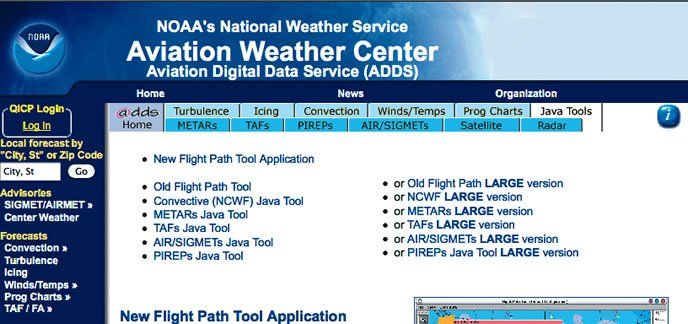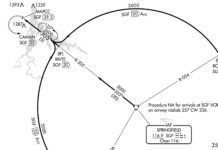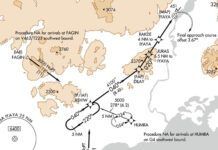It’s particularly a pilot’s nightmare: You’re sitting across the table from an FAA investigator trying to explain how your actions seemed reasonable at the time. Somehow you didn’t know about the thunderstorm/icing/closed runway/TFR that the investigator has neatly printed out and was presumably public knowledge at least five minutes before you took off.
The problem is really FAR 91.103. It requires that “each pilot in command shall before beginning a flight, become familiar with all available information concerning that flight.” That’s a tall order. The next two subsections specify the minimum information that must be obtained. For every flight, this includes takeoff and landing distances. For IFR flights and those VFR flights not in the vicinity of an airport, the reg adds weather reports and forecasts, fuel requirements, alternates and known traffic delays.
But these are just the minimums. On paper, you’re on the hook for pretty much everything. In practice, there are only two ways this matters. The first is that you must have the information you need to finish the flight safely and, frankly, you’re probably up to speed there.
The second is what happens if your negligence or oversight contributes to an incident or accident. That’s the fear that many pilots harbor, so let’s look at how you can cover your bases and maybe build habits that will avoid some embarrassing situations at the same time.

How Much is Enough?
Many pilots flying around the patch think they don’t need to do a pre-flight briefing since they are “in the vicinity of an airport.” FAR 91.103’s first sentence suggests otherwise. Some sort of pre-flight briefing for every flight ensures that the regulatory box is checked, and covers you if you end up changing your mind and leaving the pattern for greener patches.
Will an internet weather brief comply with the all-information reg? In most cases, yes. To be official, the weather data must come from a “qualified internet communications provider” (to use the FAA’s nomenclature). You’ll see this on ADDS or Fltplan.com as “QICP weather.” Sites like DUATS are QICP weather by mandate. Advisory Circular 00-62 sets forth the criteria for reliability for receiving web-based information and the FAA’s website contains a list of approved providers. As an odd aside,
NOAA’s Aviation Weather Center is not an approved source but NOAA’s Aviation Digital Data Service (ADDS) is if you set up a (free) account to log in though their secure server.
Another consideration with a web-based briefing is proving that you actually got a briefing should that ever be questioned. Phone briefings are recorded and DUAT briefings have unique session identifiers that can be retrieved if necessary. That may not be the case with other providers. Printing it may be helpful, but the question then becomes when you can wrap the fish in it? The answer is probably that if the flight completed without incident, pitch it in the recycle bin. Printing your briefing to PDF might be a greener alternative.
The Dog Ate My A/FD
Failing to know about a long-closed runway because the paper A/FD that you checked at the FBO was as stale as the coffee won’t cut it today. With virtually all of the necessary information online at FAA.gov or another free site, there’s no excuse for not checking.
The existence of online updates raises the thorny issue around whether that chart of yours is “current.” Even a chart issued only eight weeks ago will likely already have online updates. Interim changes can be found on the FAA’s website as well as the back of the latest A/FD. Over the six months that a VFR chart may be in circulation before it’s “obsolete for navigation,” there may be thousands of changes issued for that chart. Most will be irrelevant and it’s just impractical to try and keep up with all of them. Your best defense here is to use a source you’re confident will have the latest airport information and cross check NOTAMs.
Speaking of NOTAMs, if you’re venturing to an airport you’ve never been to before, it’s a good idea to check for published NOTAMs for that field. These are online too, but the FAA keeps moving the website. It’s currently at www.faa.gov/air_traffic/publications/notices. If it’s not there, Google “NTAP site:faa.gov” to find it. You can download the PDF of all the NOTAMs and do a search for the airport(s) you need.
Timing is Everything
Let’s say you depart IFR from an airport served by the same Departure control handling the big iron out of a large airport. Once airborne, you need help getting around thunderstorms or icing and this throws a wrench into an arrival or departure gate. Whether or not this disruption results in a call from the FAA, it is an unnecessary load on the system. If your last weather check was an hour before departure, that one-hour gap could come back to haunt you. When there is fast-changing activity, such as convection, make a last-minute check of those items just before you leave (or make sure the XM weather is up and running during taxi) so you can say without fudging you had the latest data.
Here’s another scenario: Inbound to the field, you check the broadcast 25 miles out. But a squall line or gust front meets you at the airport and results in a runway excursion. Was the failure to update the ASOS careless?
In one accident a few years ago, a pilot making a quick stop for a passenger at an uncontrolled midwest airport chose to take off on the same runway on which he landed. This was a serious mistake since a gust front from nearby convective activity created a tailwind in excess of 20 knots before he taxied out. Despite flying a turbine-powered single engine, a takeoff and departure stall took the life of one of his passengers.
Many pilots believe that if they checked the weather before departing on a round-robin fight, they’re good for the second leg also. Maybe not. The reg says that all available information needs to be checked before a “flight.” It doesn’t say “round-trip flight.” Thus, let your $100 hamburger digest while you do a quick update before heading home. We think it’s reasonable to do a smart update here: Check for new TFRs, NOTAMs and any fast-moving weather (like thunderstorms). You can call for an Abbreviated Briefing from Flight Service, but we’ve heard mixed reports as to whether those briefers will give you just the facts or launch into the whole standard briefing.
The question often comes up of whether it is a violation to carry outdated charts in your aircraft. According to the FAA’s Chief Counsel’s office, it’s not, and no enforcement action will be taken unless out-of-date information contributed to an incident. There’s actually no reg on carrying outdated information (other than for weight and balance purposes), unless you’re flying a large or turbine-engine multi-engine aircraft, or flying under Parts 121 or 135.
The same treatment applies for VFR-only handheld or panel-mounted GPS receivers. Their databases need not be current since they are neither approved by the FAA nor required for VFR flight. But again, trigger an enforcement investigation and the fact of out-of-date databases may be used in an enforcement action where they were a contributing factor.
Free as a Bird?
FAR 91.103 just pertains to a pre-flight briefing. The failure to stay updated during the flight can still trigger FAR 91.13(a)’s “careless and reckless” clause. This reg can target a wide array of sub-standard conduct, not the least of which could be failure to keep apprised of weather or TFRs.
Unless you’re flying an aircraft with a real-time display of TFRs, you may inadvertently traverse one if VFR down low, since those covering sporting events are not re-issued for every game. When traversing a metro area with several stadiums, rather than pulling out the sports page, an easier source is the ATIS broadcast of a nearby airport. In the Denver area, for example, there are several airports close to the stadiums that will broadcast the existence of the TFR (but not usually the current score).
Preventative Medicine
Aside from actually getting information to complete your flight, your pre-flight briefing is insurance. If you require special handling by ATC due to an icing encounter, minimum-fuel declaration, or other request that creates an undue burden, the Feds may come knocking.
The best defense against a transgression is a safety-oriented mentality—and some way to document that you made a reasonable effort to get the information that’s out there. Case history has shown that reasonable isn’t always a sound defense, but it’s your best bet to get the investigation set aside at the early stages, while it’s still just a chat between you and that FAA inspector.





